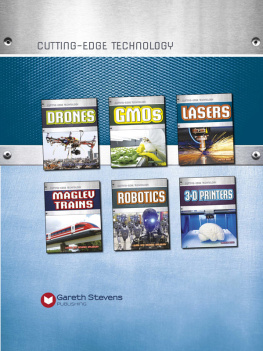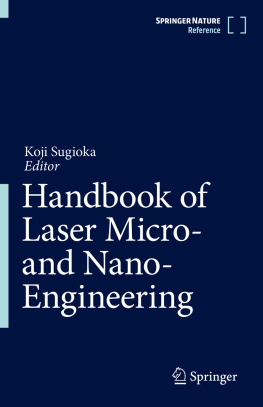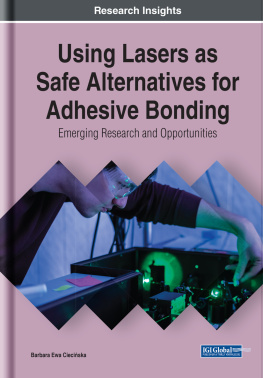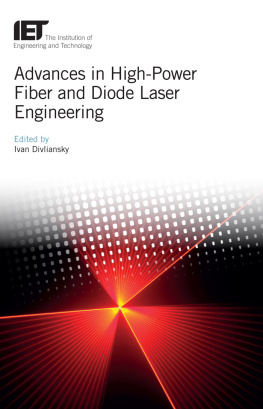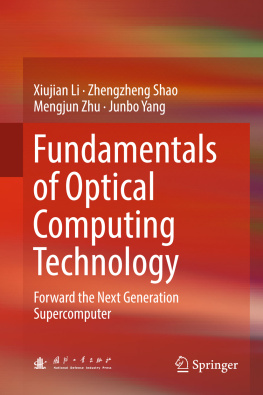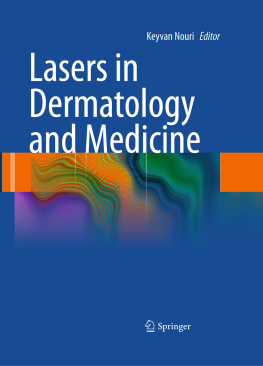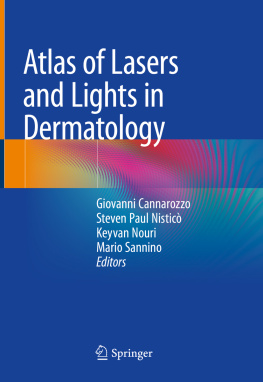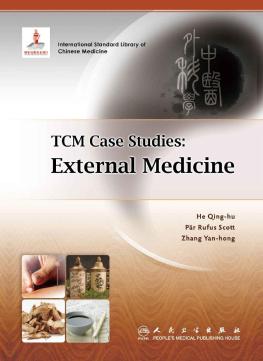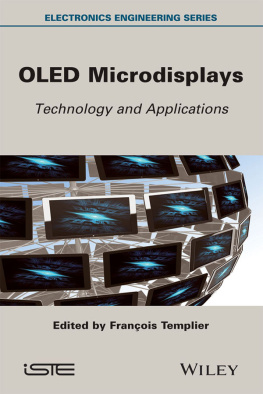
Table of Contents
List of Tables
- Chapter 5
- Chapter 7
- Chapter 8
- Chapter 10
- Chapter 12
List of Illustrations
- Chapter 1
- Chapter 2
- Chapter 3
- Chapter 4
- Chapter 5
- Chapter 6
- Chapter 7
- Chapter 8
- Chapter 9
- Chapter 10
- Chapter 11
- Chapter 12
Guide
Pages
Vertical External Cavity Surface Emitting Lasers
VECSEL Technology and Applications
Edited by
Michael Jetter
Peter Michler

Editors
Dr. Michael Jetter
University of Stuttgart
Institut fr Halbleiteroptik
Allmandring 3
70569 Stuttgart
Germany
Prof. Dr. Peter Michler
University of Stuttgart
Institut fr Halbleiteroptik
Allmandring 3
70569 Stuttgart
Germany
Cover: fotojog/Getty Images
All books published by WILEYVCH are carefully produced. Nevertheless, authors, editors, and publisher do not warrant the information contained in these books, including this book, to be free of errors. Readers are advised to keep in mind that statements, data, illustrations, procedural details or other items may inadvertently be inaccurate.
Library of Congress Card No.: applied for
British Library CataloguinginPublication Data A catalogue record for this book is available from the British Library.
Bibliographic information published bythe Deutsche Nationalbibliothek The Deutsche Nationalbibliothek lists this publication in the Deutsche Nationalbibliografie; detailed bibliographic data are available on the Internet at .
2022 WILEYVCH GmbH, Boschstr. 12, 69469 Weinheim, Germany
All rights reserved (including those of translation into other languages). No part of this book may be reproduced in any form by photoprinting, microfilm, or any other means nor transmitted or translated into a machine language without written permission from the publishers. Registered names, trademarks, etc. used in this book, even when not specifically marked as such, are not to be considered unprotected by law.
Print ISBN: 9783527413621
ePDF ISBN: 9783527807949
ePub ISBN: 9783527807970
oBook ISBN: 9783527807956
Preface
The first reports in 1997 of vertical externalcavity surfaceemitting laser (VECSEL), also known as optically pumped semiconductor disk laser (SDL), attracted a lot of attention in the research and laser community. This relatively new type of laser combines the versatility in wavelength from the semiconductoractive region with superior emission properties such as multiwatt output powers in cylindrically symmetric TEM00 mode and nearly diffractionlimited beam quality. The extended cavities allow an efficient intracavity frequency conversion and enable, by incorporating semiconductor saturable absorber mirrors (SESAM), shortpulse mode locking operation.
Since the first summarizing book of the achievements in this field in 2010 from Oleg G. Okhotnikov, a tremendous progress in demonstrating the expected VECSEL properties took place. The direct emitting wavelength of these lasers expands meanwhile from the blue to the midinfrared range. With frequency doubling, even the UV spectral range is reached with high optical powers. SESAM modelocked lasers demonstrated pulse widths below 100fs and pulse repetition rates over 100GHz. However, not only the predicted features were confirmed but also new varieties of VECSELs were invented in the meantime. The most prominent ones are the modelocked integrated externalcavity surfaceemitting laser (MIXSEL), combining the SESAM and gain mirror in one semiconductor stack, and the membrane externalcavity surfaceemitting laser (MECSEL), basically a heat spreadersemiconductor sandwich in an external cavity, enabling wavelength ranges which were not reachable due to semiconductor growth restrictions. Next to these nice efforts and lively research, these devices as well took the step to commercialization. Several companies offer nowadays laser equipment including SDL either in cw or modelocked operation.
It is our pleasure and honor to present with this book some of the most recent developments in VECSEL research. It is written by internationally renowned experts who actively advance this field of laser research. The book is structured into two sections, a continuous wave and a pulsed laser part. It includes the development of the VECSELs, recent advances, technology aspects, and some applications of VECSEL. It can be useful for engineers and scientists working in this field as well as for graduate students interested in the technology of these laser devices.
We like to thank all the authors for their valuable contributions to this book and their patience. Furthermore, we like to thank the editorial staff of WileyVCH GmbH for keeping this book on track for publication.
Stuttgart, March 2021
Michael Jetter
Peter Michler
Part I
Continuous wave VECSEL
History of Optically Pumped Semiconductor Lasers VECSELs
Mark E. Kuznetsov
Axsun/Excelitas Technologies, Billerica, MA, USA
1.1 Introduction
Optically pumped semiconductor lasers (OPSLs) are an old concept that originated in the early days of semiconductor lasers in the 1960s, and that remained a scientific curiosity until the mid1990s, when its potential capabilities for high power with excellent beam quality were first fully demonstrated, spurring subsequent rapid development of the science and technology of these versatile lasers. Distinguishing features of OPSLs today are light emission normal to the plane of the semiconductor chip, laser cavity external to the chip to stabilize fundamental transverse laser mode and to enable insertion of intracavity functional optical elements, and the use of optical pumping for efficient and high output power operation. A wide range of applications is enabled by additional remarkable properties of this laser family, such as wavelength operation from ultraviolet (UV) to midinfrared (IR) and even terahertz range, and passively modelocked operation with output pulses shorter than 100fs. These lasers are also widely known by two other names, descriptive of their geometry: vertical externalcavity surfaceemitting lasers (VECSELs) and semiconductor disk lasers (SDLs). Alternatively, VECSELs can also be electrically pumped, but achievable laser output powers are then typically much lower than for the optically pumped version.
OPSL development in the 1990s was spearheaded by Aram Mooradian in Micracor, a small startup company that spun out technology from Aram's group in the MIT Lincoln Laboratory. I worked with Aram in Micracor to carry out this development. In 2011, the first annual VECSEL conference was held at SPIE Photonics West, with the VECSELsXI conference scheduled for 2022. The first book about these lasers, Semiconductor Disk Lasers: Physics and Technology , was published in 2010; it was edited by Oleg Okhotnikov from the Tampere University of Technology in Finland and described the then state of the art in chapters contributed by researchers from around the world. Since the publication of this book, science, technology, and applications of VECSELs have made a significant step forward, and hence the present book to bring VECSELs overview up to date. This chapter describes the history of OPSLs, the people that took part in their development, and it's also a personal story of the OPSL development by our team at Micracor. Sadly, both Aram Mooradian and Oleg Okhotnikov, who have contributed so much to the early development of these lasers, have passed away since the publication of the first book. This historical chapter is dedicated to their memory.
Next page

